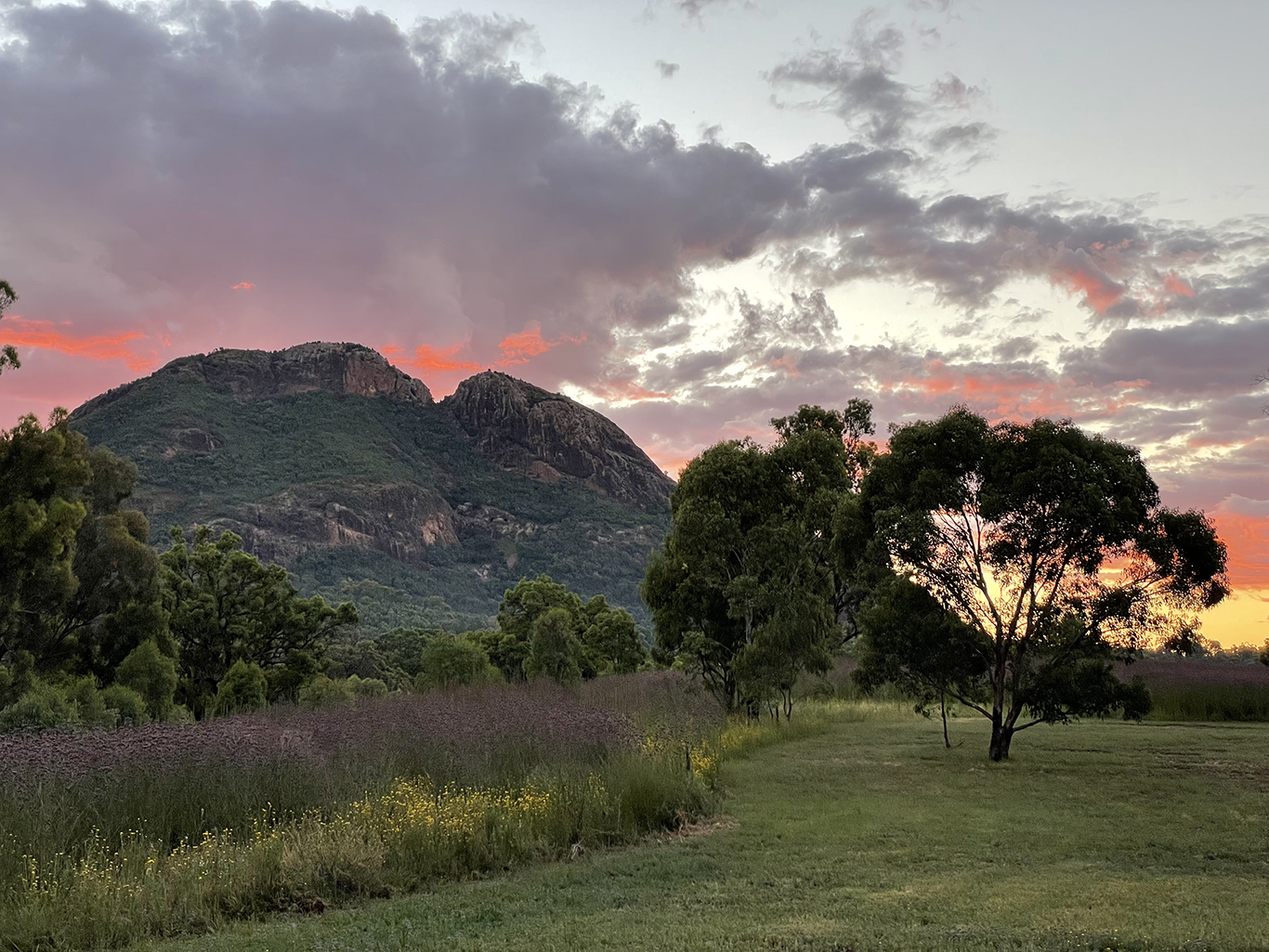
Warrumbungle National Park
Starry starry nights
The name ‘Warrumbungle’ comes from the Kamilaroi language, it is believed to mean ‘crooked mountains’, an apt description of the craggy peaks and sculptural forms of this ancient landscape. Near Coonabarabran in central NSW, the heritage listed Warrumbungles mark the place where the vibrant green landscape of the coastal east meets the dry plains of western NSW.
Spectacular volcanic forms
Did you know Australia has the longest chain of hot spot volcanoes in the world? Starting over 34 million years ago at Cape Hillsborough in Queensland and ending at Mount Macedon in Victoria a mere six million years ago. A hot spot volcano is a magma chamber just below the surface of the earth. As the continents drift over it, every now and then it burns through the earths crust and forms a volcano. One of the largest volcanoes in this chain is the shield volcano that formed the Warrumbungles, it was active 13 to 17 million years ago.
The unusual peaks and rocky outcrops of the Warrumbungles are the result of millions of years of weathering and erosion. Some of the unique and interesting landforms you will see are Belougery Spire, Belougery Split Rock, Crater Bluff, Bluff Mountain, Mount Exmouth and the Breadknife. The Breadknife is a spectacular 90-metre high blade of volcanic rock that stretches for half a kilometre, and Bluff Mountain is the largest lava dome of the Warrumbungle volcano with a near-vertical 250-metre high face.

Night Skys
Warrumbungle National Park is renowned for its stargazing opportunities, thanks to crystal-clear skies, low humidity and high altitude. For these reasons, in 2016 it was declared Australia’s first Dark Sky Park, the first in the southern hemisphere. Dark Sky Parks are important for plants and animals that need regular light and dark to eat, sleep, hunt, migrate and reproduce. Reducing light pollution in the area by modifying lights to shine downwards and removing street lighting helps protect those clear starry nights.
The perfect location for a world-class astronomy research facility, at nearby Siding Spring Observatory you can explore Australia’s largest telescope, grab a bite at the café or do a walking tour. Siding Spring is also the central point for the World’s Largest Virtual Solar System. Each planet is a scale three-dimensional model displayed on a billboard, scaled relative in size to the observatory dome which is the sun. The location of the planets are also scaled in distance, just as you would find them in outer space – only 38 million times smaller! Starting from any one of five midwest towns each trail converges on, and ends at, the Observatory.
Walking
Hiking the Warrumbungles is an experience not to be missed. Stunning landforms, jaw-dropping views and relatively quiet tracks make for some fabulous walks. If you are looking for a challenge you could try the iconic Breadknife and Grand High Tops Circuit, 14.5km and quite steep, or add in the extra 3km hiking to the top of Bluff Mountain. If you are after something more relaxed maybe Burbie Canyon, Tara Cave or Whitegum Lookout are more your style. These and many more tracks mean there is something for everyone.
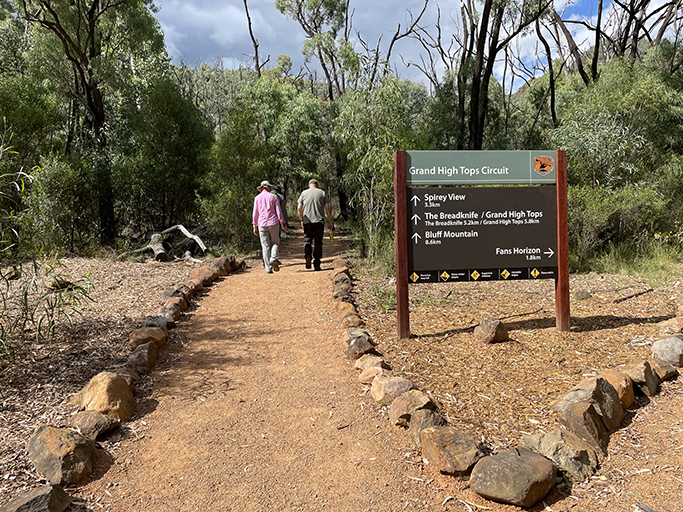

Rebuilding
In 2013 a major bush fire ravaged over 90% of the National Park, destroying much of the park infrastructure including the visitor centre, walking tracks and directional signage. NPWS implemented a huge rehabilitation program to rebuild the park and learn more about fire behaviour.
Camping
The Warrumbungles deserve a stay of a few days or more to enjoy them. There are many camping options to choose from, but be prepared to share you space with some very friendly wildlife! The kangaroos are not at all worried by the human visitors, and keep an eye out for koalas, goannas, emus and a multitude of other feathered friends.
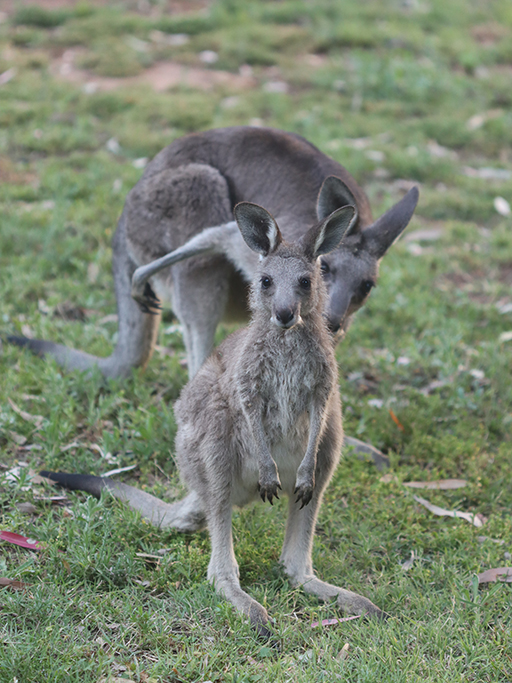
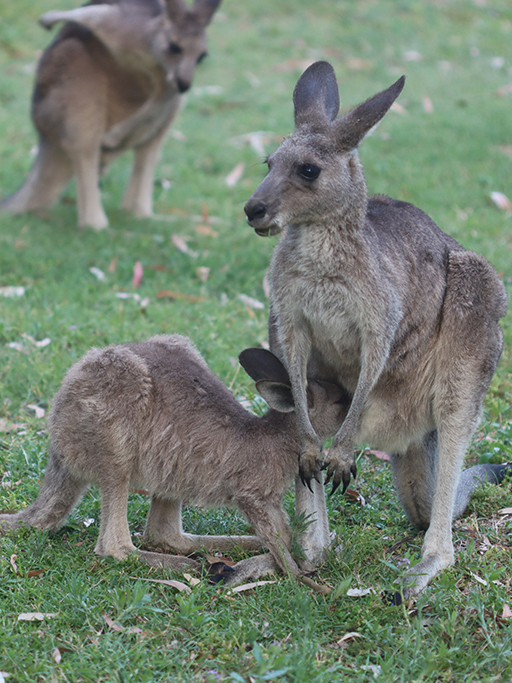
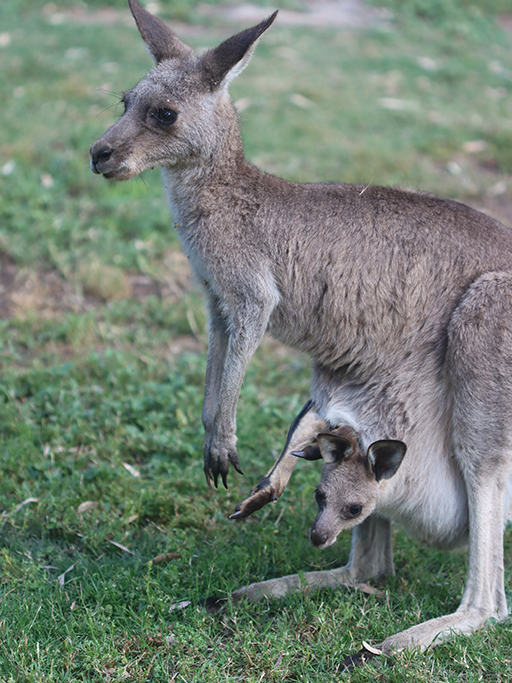
Camp Blackman is the largest camp ground in the National Park with three camping areas. It is camper, caravan and tent friendly, with plenty of powered and unpowered sites to choose from.
There are hot showers, flushing toilets and an area for washing clothes and dishes. But the facilities are not the only highlight of this camping spot. As well as being able to sit around the camp fire and enjoy the views across to the Breadknife, Bluff Mountain and Belougery Split Rock, you are in for a treat when the stars come out.
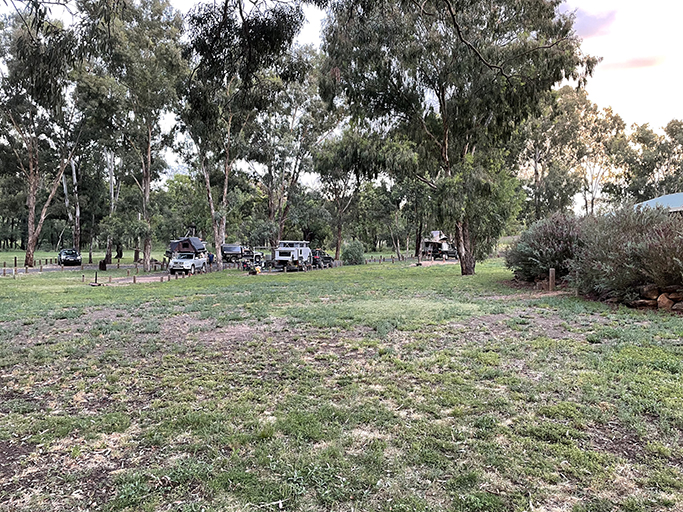
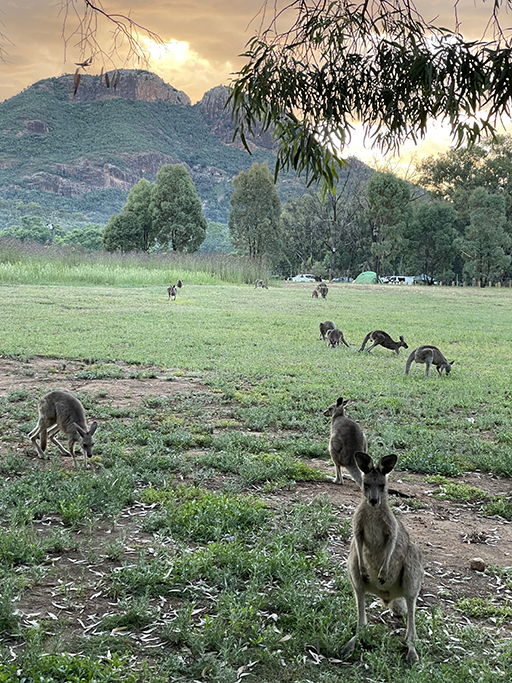
Just nearby is Camp Walaay, perfect for large groups and school. Campers here share the facilities of Camp Blackman and have the convenience of the Warrumbungle Environmental Educational Centre, with classrooms available for conferences and other activities.
Nearer the Visitor Centre is Camp Wambelong. On the banks of the Wambelong Creek the views of Belougery Split rock are spectacular. This area is camper, caravan and tent friendly, with plenty of unmarked, unpowered sites to choose from. There are bbq’s, picnic tables and toilets but no showers.
If you are after something more remote there are several walk-in camping areas including Camp Pincham, Ogma Gap, Dows Camp, Balor Hut and Burbie Camp.
Another option, on the southern side of the National Park, is Gunneemooroo campground, a picturesque campground set in the shadows of Mount Naman. This is a remote bushland camp for camper trailers and tents, with toilets but not much else – but it is cheaper with only a booking fee, no camping fee.
Don’t forget camping in all National Parks requires a booking!
